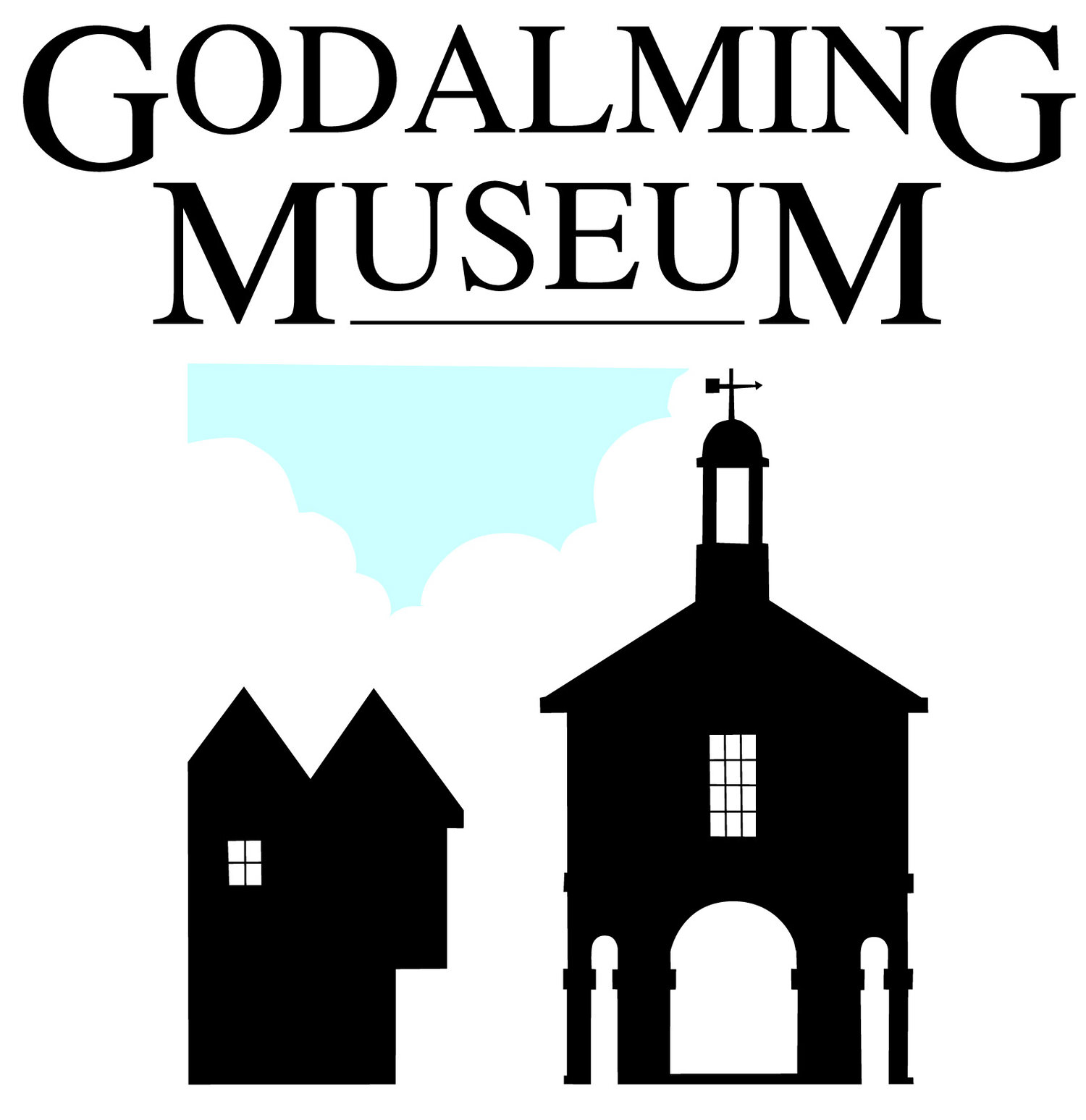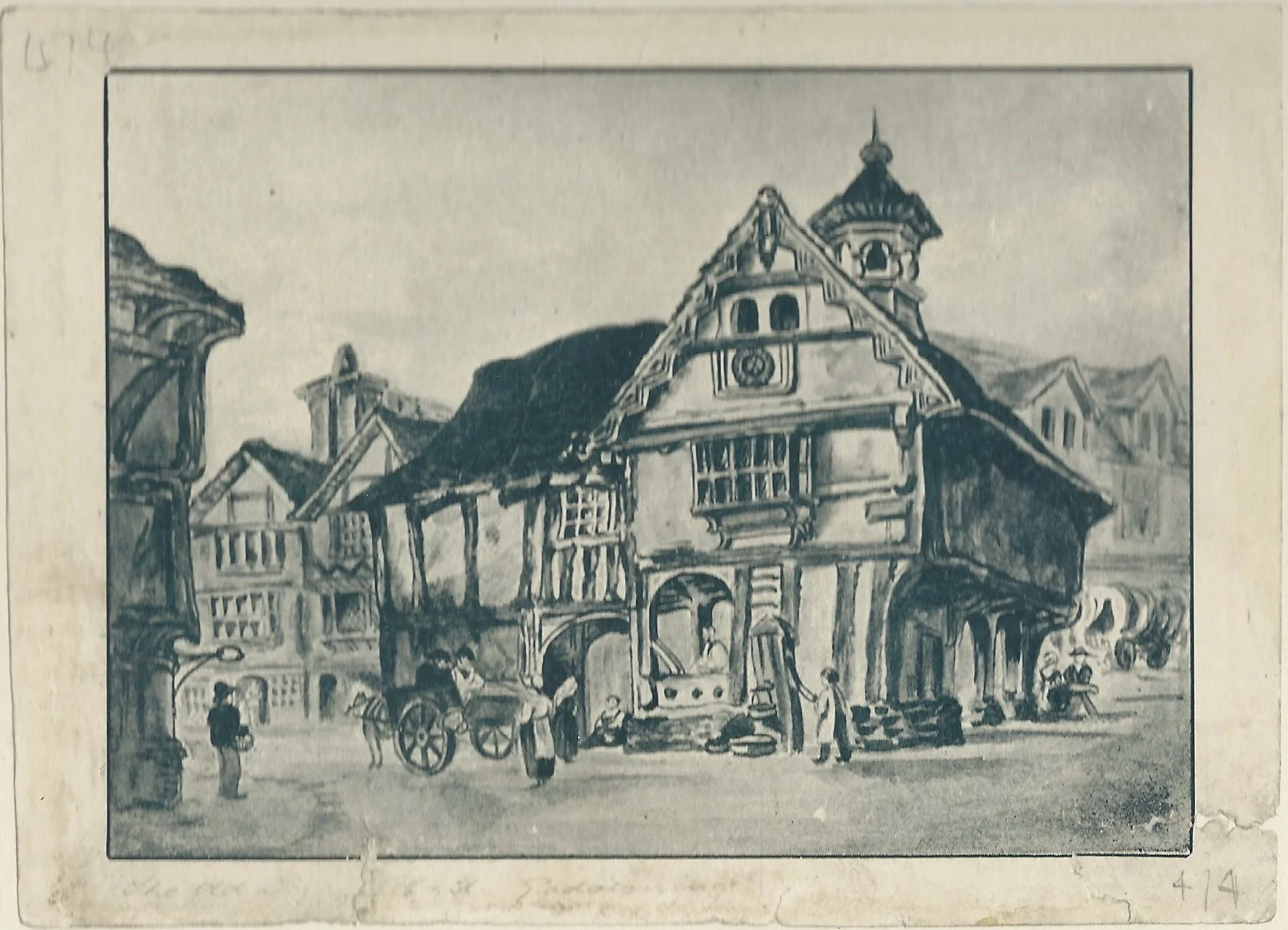A Short History of Godalming
The earliest known reference to Godalming is in King Alfred's will in c.890. It was referred to as the ‘twune of Godelmynge’, a name derived from ‘Godelm’ or ‘Godhelm’, a Saxon personal name, and ‘ynge’ or ‘inge’, the followers, hence ‘people of Godelm’.
Godalming Parish Church
A reconstruction drawing and plan of the Godalming Parish Church as it looked in around 1000. From the book the Parish and Church of Godalming by Samuel Welman.
The town of Godalming was established on well-drained land beside the River Wey. Archaeological excavations have shown that the site was probably occupied from Neolithic times around 4,000-3,000 BC, and there is much evidence to show that the surrounding flat-topped hills were extensively farmed during the Romano-British period. The Saxons soon recognised the advantage of the area and founded a settlement. By the 11th century a church was built in the local Bargate stone and three water mills were in existence.
Godalming’s Market House
Mounted print of a copy of the artist's impression of the original Old Town Hall (Market House) of Godalming.
In 1300 permission was granted to hold a weekly Monday market and a three- day fair at the feast of St Peter and St Paul. In 1575 Queen Elizabeth granted the town a charter, and a weekly market on Wednesdays and a fair at Candlemas in February. The markets were important as Godalming was the centre of a thriving wool trade. From the 16th century, the woollen cloth, dyed with a local blue dye, became of great renown abroad. The 18th century saw the rise of the silk knitting industry, but woollen hosiery was pre-dominant by the 19th century. Papermaking, quarrying and the leather industry all prospered until recent times.
Hand Knitting Frame
Hand knitting frame (knitting machine), donated to Godalming Museum by Messrs Allen, Solly and Co Ltd, formerly of Godalming, c.1860-1888.
The old coaching road from London to Portsmouth ran through the town and there were many inns. The White Hart was mentioned by Charles Dickens and The Kings Arms was famed for entertaining Peter the Great, Czar of Russia, in 1698. General James Oglethorpe, a soldier and politician, inherited his father’s estate at Westbrook, and founded a colony, Georgia, in 1732 in America. The oldest street, Church Street, is lined with timber-framed buildings dating from the 15th century, and leads from the church to the Old Town Hall. This building, known locally as the Pepperpot, built in 1814 replacing the old market hall on the site of administration and justice since Saxon times. Our first Mayor and Corporation were appointed in 1835, replacing the administration of the Town Warden and eight assistants.
General James Oglethorpe
Framed engraving, General Oglethorpe at the sale of Dr Johnson's books, 18 February 1785.
The railway reached Farncombe in 1849 and a station opened in Godalming in 1859. The light industries expanded. In September 1881 Godalming became the first town to have private and public electricity. The power was provided by a water-wheel driven hydro generator from the River Wey.
Electric Light in Godalming
Newspaper cutting from the Graphic, Saturday November 12th, 1881, illustration: The town of Godalming Illuminated by Electric Light.
Godalming Museum is housed in one of oldest buildings in the town, dated to 1446 by dendrochronology. The museum has much on the history of the town and its people, including Gertrude Jekyll the garden designer, Edwin Lutyens the architect, Jack Phillips the Titanic telegraphist and Mary Tofts, the lady who claimed in 1726 to be giving birth to rabbits.
The Roof in 109a Pepperpot
Photograph showing some of the historic features of the Museum’s medieval roof.






